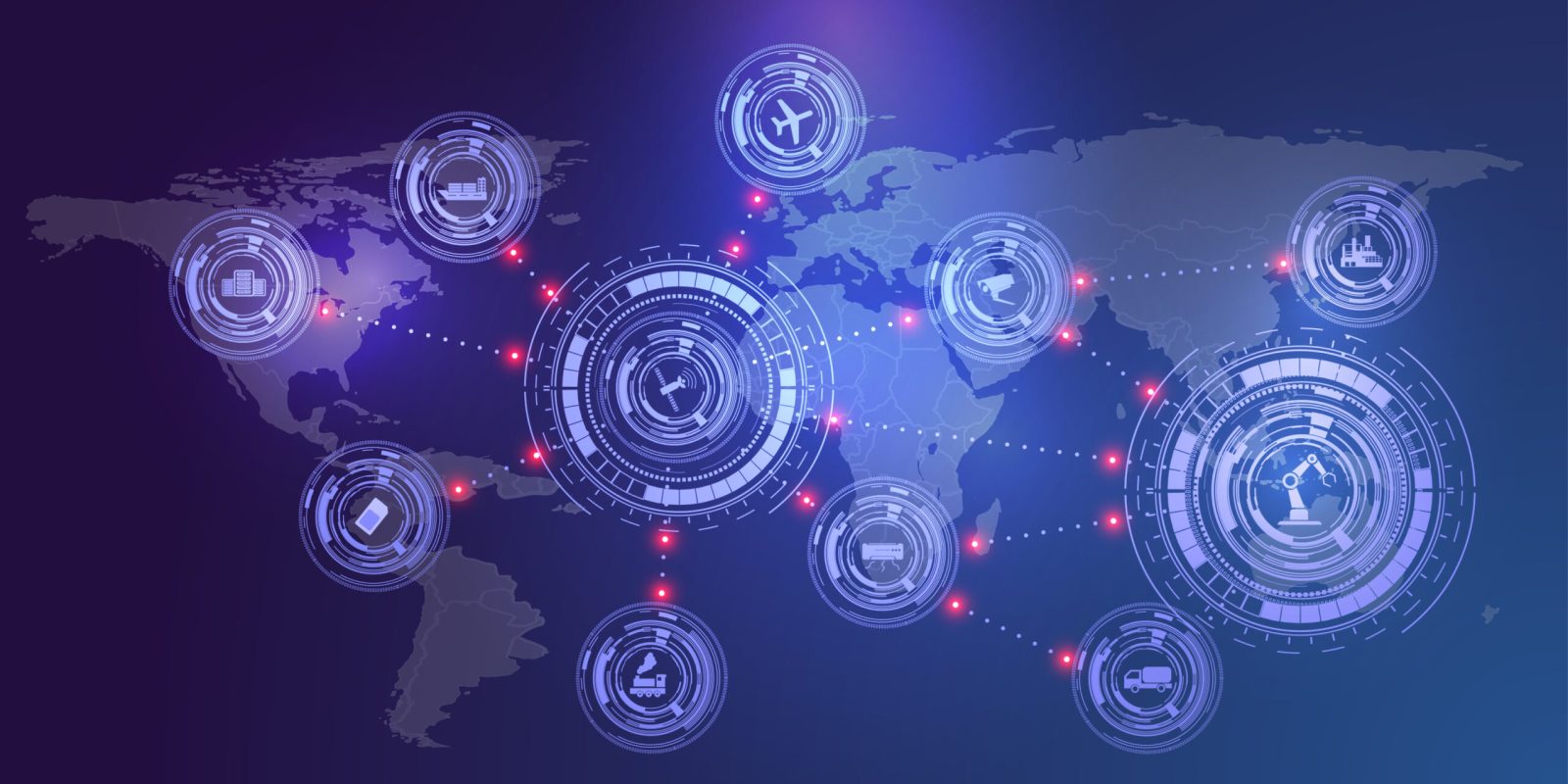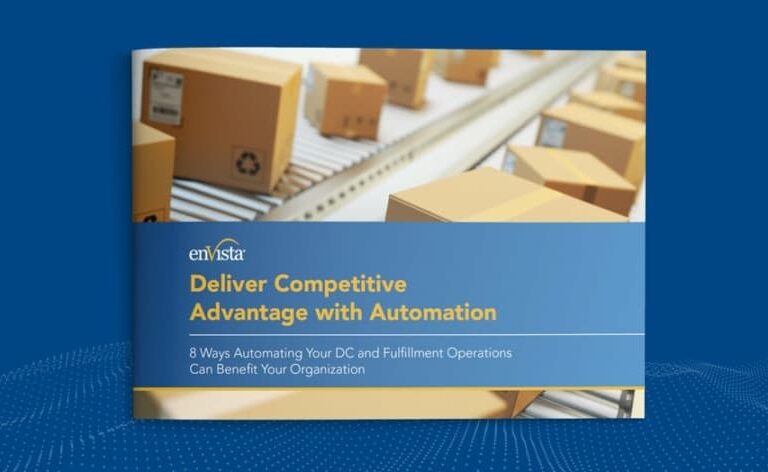- AI Optimizes Supply Chain Networks & Transportation – AI enhances network design through data analysis, simulation and route optimization, reducing transportation costs and improving efficiency.
- AI-Driven Inventory Management Reduces Costs & Improves Accuracy – AI-powered demand forecasting, dynamic inventory optimization and predictive maintenance help organizations reduce carrying costs, prevent stockouts and optimize supply chain visibility.
- AI Enhances Warehouse Operations & Automation – AI streamlines labor performance, robotics, slotting optimization and warehouse layout design to improve efficiency, reduce manual work and enhance space utilization.
- AI Supports Real-Time Decision-Making & Continuous Improvement – AI-driven analytics provide real-time insights, allowing organizations to proactively address inefficiencies, improve collaboration and enhance supply chain resilience.
- Strategic AI Implementation Leads to Cost Savings & Higher Customer Satisfaction – Organizations should focus AI initiatives on high-cost areas like network design, inventory and warehousing to maximize cost savings and improve service levels.
Supply chain leaders face a multitude of challenges, with the never-ending challenge being how to cut costs in today’s environment. Efficiently managing costs throughout the supply chain not only enhances financial performance but also empowers organizations to deliver greater value to customers while upholding operational excellence. Artificial intelligence (AI) provides many game-changing opportunities to reduce costs through advanced analytics and improved execution in the areas of overall network design and transportation, forecasting, planning and inventory management and warehouse operations.
While the promise of AI revolutionizing supply chain operations is widely known, the real transformation lies in understanding how to deploy AI for tangible results. In this blog, we will venture beyond the theoretical and explore practical ways your organization can leverage AI to enhance productivity, boost profitability and elevate customer satisfaction.
How is Artificial Intelligence Used in Supply Chain?
AI is a powerhouse for supply chain leaders looking to reduce their overall supply chain and transportation costs. AI can help you design your supply chain network in several ways:
- Data Analysis: AI algorithms can analyze vast amounts of historical and real-time data related to demand patterns, supplier locations, customer locations, transportation routes and costs. By processing this data, AI can identify inefficiencies and opportunities for optimization within the supply chain network.
- Simulation and Modeling: AI-powered simulation and modeling tools allow supply chain managers to rapidly evaluate various network design scenarios with several variations optimized. AI can also iterate continuously across different inputs or time horizons in order to provide an ongoing, optimized view of your network. This includes assessing the impact of different warehouse locations, distribution strategies, transportation modes and inventory positioning on overall transportation costs.
- Transportation Optimization: AI algorithms analyze factors such as delivery locations, transportation modes, vehicle capacities, traffic conditions and delivery time windows to generate optimized delivery routes. By minimizing travel distances, reducing fuel consumption and maximizing vehicle utilization, AI-driven route optimization can significantly lower transportation costs while improving delivery efficiency and customer satisfaction.
- Warehouse Location Selection: AI algorithms assist in identifying the most strategic locations for warehouses, distribution centers and production facilities within the supply chain network. These algorithms consider factors such as proximity to suppliers and customers, transportation infrastructure, labor availability, real estate costs and regulatory considerations. By selecting optimal facility locations, AI helps minimize transportation costs, reduce lead times and enhance overall supply chain agility and responsiveness.
- Multi-Objective Optimization: AI algorithms can analyze multiple conflicting objectives simultaneously, such as minimizing transportation costs while maximizing service levels or minimizing environmental impact. Through sophisticated optimization techniques, AI can find solutions that balance these competing objectives effectively.
AI-Driven Inventory Management
Inventory is an organization’s largest capital investment, which means it holds a lot of power in your supply chain. Over the last few years, supply chains have been challenged by intense fluctuations in demand, leading to overstock on one end and stockouts on the other. With AI, organizations can optimize inventory management, reduce carrying costs and improve customer service levels.
- Demand Forecasting: Predicting demand is one of the most challenging aspects of inventory management, as it is constantly changing, and historical data isn’t always indicative of future buying patterns. AI-powered tools can analyze historical data, market trends, seasonality, geography, supply chain factors and more to give you the most reliable source of demand data with which to make your inventory decisions.
- Dynamic Inventory Optimization: Once you know what type of inventory you need, the next hurdle is determining how much to order. AI-driven inventory optimization algorithms continuously analyze real-time data on sales, inventory levels, lead times and supply chain dynamics to adjust inventory levels and replenishment decisions.
- Predictive Maintenance: AI-powered predictive maintenance algorithms analyze sensor data from equipment and machinery in warehouses and distribution centers to predict potential equipment failures before they occur. By identifying maintenance needs proactively, organizations can minimize downtime, prevent stockouts due to equipment failures and optimize inventory turnover rates.
- Supply Chain Visibility and Collaboration: AI technologies enable real-time visibility into inventory levels, order status and supply chain performance across multiple locations and partners. By providing stakeholders with actionable insights and alerts, AI-powered supply chain visibility platforms facilitate collaboration and coordination among suppliers, manufacturers, distributors and retailers, reducing the risk of excess inventory buildup, stockouts and supply chain disruptions.
- Optimized Order Fulfillment: AI-driven order fulfillment algorithms optimize order processing and fulfillment workflows to minimize order cycle times and improve order accuracy. By automating order allocation, picking, packing and shipping processes, AI technologies streamline warehouse operations and reduce lead times. AI algorithms can also prioritize high-demand products for fulfillment, ensuring that inventory is allocated efficiently to maximize sales opportunities and minimize carrying costs.
AI Integration in Warehousing
The location, layout and operations of a warehouse or distribution center are integral to its success. Optimizing these factors, however, requires a significant amount of strategy and can be difficult when leveraging manpower alone. AI-driven tools can provide significant help in optimizing your facilities.
- Labor Performance: AI-driven labor analytics can provide constant updates to labor forecasts and continuous improvement. AI systems can determine based on order profiles and labor standards how to optimize labor assignment. AI can also determine areas for improvement in each labor involved process through analysis and feedback mechanisms.
- Robotics & Automation: AI powers countless automation and robotic tools that can be used in the warehouse for tasks such as picking, packing and sorting. These tools are great for supplementing your existing labor, as they can take the burden off of employees to complete tedious, burdensome and dangerous tasks and free them up for more strategic roles.
- Warehouse Slotting Optimization: AI-driven tools can use factors such as data analysis, demand forecasting, simulation and modeling and product characteristics to strategically organize and position inventory within a warehouse or distribution center for maximum efficiency and productivity. These tools can minimize picking times, reduce travel distances and improve overall order fulfillment efficiency.
- Continuous Improvement: AI-enabled warehouse management systems continuously analyze operational data to identify inefficiencies, bottlenecks and opportunities for improvement. By providing actionable insights and recommendations, AI empowers warehouse managers to make data-driven decisions and implement process improvements that enhance efficiency, accuracy and throughput over time.
- Facility Layout Design & Space Utilization: AI algorithms analyze historical data on inventory movements, order patterns and SKU characteristics to design an optimal warehouse layout that minimizes travel distances and maximizes space utilization. By considering factors such as product velocity, storage requirements and picking frequencies, AI can determine the ideal placement of products within the warehouse to minimize travel time for pickers and reduce congestion in high-traffic areas.
AI in Supply Chain – Challenges and Opportunities
The adoption of AI in supply chain management presents both challenges and opportunities. Organizations face hurdles such as high implementation costs, data integration complexities, data security and change management and the need for skilled talent to manage AI-driven systems. Some organizations are combatting high implementation costs by leveraging AI as a Service, which allows them to experience the benefits of AI with the help of a third-party consultant without undergoing a full-scale implementation. In the event you decide to move forward with an AI integration project, engaging a highly experienced third-party integrator to guide you through the project will vastly increase your adoption success.
Even considering the challenges that come with emerging AI technology, several trends and opportunities for innovation are driving AI’s transformative impact, including autonomous supply chains, AI-powered demand forecasting and real-time predictive analytics for risk mitigation. Businesses are increasingly leveraging AI to enhance supply chain resilience, improve sustainability and optimize end-to-end visibility, ensuring they remain competitive in a rapidly evolving market.
Unlocking the full potential of AI in your supply chain requires more than just technology—it demands the right strategy and expertise. At enVista, we partner with organizations to navigate the complexities of AI adoption, identifying the most impactful opportunities to enhance efficiency, profitability and customer service. By focusing on high-cost areas such as network design, inventory management and warehousing, we help businesses drive measurable cost savings and operational improvements. Ready to accelerate your AI journey with a tailored approach? Connect with our supply chain experts today and let’s explore how AI can transform your operations. Let’s have a conversation. ®






